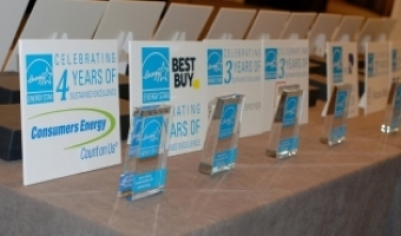

Boston, MA—The Consortium for Energy Efficiency (CEE) today releases its tenth Annual Industry Report, reflecting the increasing importance of efficiency and demand response for managing energy and benefiting customers and society.
Total expenditures from all funding sources on gas and electric DSM programs in 2014 rose nine percent over 2013 to $8.7 billion. Year over year respondents demonstrate a seven percent increase. Highlights of the report include:
As utility business models evolve at different rates and for different purposes across states and provinces, Consortium members excavate the facts through projects such as the CEE Annual Industry Report. With a twenty-five year history of working together on binational initiatives, explorations, and positions, members are mindful of which projects require the efforts of all, including measuring the size and impact of the energy efficiency and demand response program industry.
“For example, to meet grid reliability and resiliency objectives, the importance of demand response to demand side management is growing alongside efficiency,” pointed out CEE Executive Director Ed Wisniewski. “As a result, CEE asked demand response program administrators to report the number of events called for each of their DR programs, along with attributes for each event. Through efforts like the Annual Industry Report, we’re defining the DR baseline more precisely.”
The growth of energy efficiency and demand response is a testament to the attractiveness of demand side management as a clean energy resource with all the social and utility benefits resulting from program offerings.
The power of the CEE Annual Industry Report is in providing an annual trend analysis of demand side management budgets, expenditures, and savings. Mapping program administrator data into an aggregate and visible report of program funding and savings has been a project CEE members value. The 2015 Annual Industry Report represents data from the vast majority of large efficiency program administrators—361 utility and nonutility program administrators from every US state, the District of Columbia, and eight Canadian provinces. It is the most extensive known research on energy efficiency program funding and impacts. CEE and AGA work directly with program administrators on data collection and quality assurance efforts, under conditions of trust and confidentiality, resulting in more consistent and accurate data than when collected from a variety of sources. Because of this reputation, CEE members, federal agencies, industry organizations, evaluators, and others who need a reliable source of energy efficiency trends use CEE data.
Energy efficiency program administrators working in various states and provinces are mandated and funded to achieve long lasting reductions in energy use for the United States and Canada. Each of these programs operates with different goals, regulation, cost structures, and programs. Nevertheless, these administrators founded the Consortium for Energy Efficiency in 1991 to accelerate market uptake of measurably efficient products and services.
Ten years ago, the Consortium initiated a survey of members and other efficiency program administrators to discover the size and momentum of the industry by measuring program budgets and impacts. Since 2006, the survey has grown in scope, adding Canadian programs and standardizing the format in 2007 and joining forces with major collaborator AGA in 2009. Since then, each year has seen the collection of additional information, deepening the data picture. By coordinating the two organizations information needs, AGA and CEE have developed a more comprehensive reporting process with a lower burden on respondents.
The American Gas Association, founded in 1918, represents more than 200 local energy companies that deliver clean natural gas throughout the United States. There are more than 72 million residential, commercial, and industrial natural gas customers in the US, of which 95 percent—just under 69 million customers—receive their gas from AGA members. AGA is an advocate for natural gas utility companies and their customers and provides a broad range of programs and services for member natural gas utilities, pipelines, marketers, gatherers, international natural gas companies, and industry associates. Today natural gas meets more than one-fourth of the United States’ energy needs. To find out more, please visit www.aga.org.
About CEE
CEE is an award-winning consortium of efficiency program administrators from the United States and Canada. Members work to unify program approaches across jurisdictions to increase the success of efficiency in markets. By joining forces at CEE, individual electric and gas efficiency programs are able to partner not only with each other, but also with other industries, trade associations, and government agencies. Working together, administrators leverage the effect of their ratepayer funding, exchange information on successful practices and, by doing so, achieve greater energy efficiency for the public good.